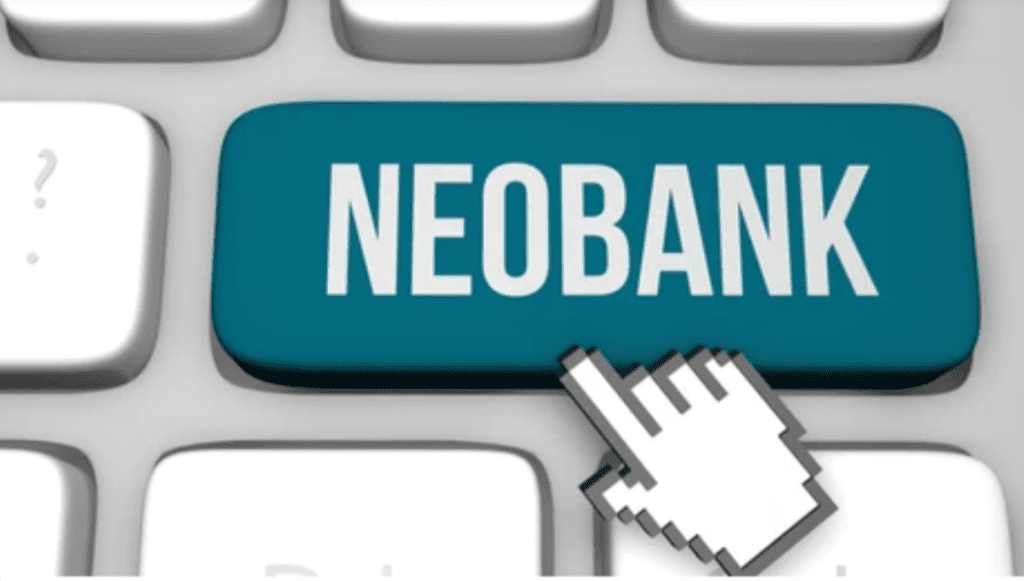Neobanks have gained enormous popularity in recent years. These digital banks offer customers a variety of financial services via mobile applications, having a substantial impact on the traditional banking system. Its development is predicted to keep going in 2023 as more and more customers choose online banking options and some people think about starting a neobank from scratch.
This article will discuss what neobanks are, how they differ from traditional banks, how they affect the economy, features of such an app, and how to start a neobank from scratch.
What is a Neobank?
A neobank is a digital bank that only performs business online and offers a variety of financial services to clients through mobile applications. These services include everything from savings and checking accounts to loans, investments, and insurance. Neobanks, in contrast to traditional banks, do not have physical locations, which enables them to operate with minimal overhead expenses and provide more competitive rates and fees.
Differences between a Neobank and a Traditional Bank
A neobank and a traditional bank differ significantly in several aspects:
Digital-First Approach. While traditional banks have physical locations and provide both online and in-person banking services, neobanks are digital-only banks that do all of their business online.
Cost Structure. Because neobanks often have reduced overhead expenses, they may offer their customers lower fees and better interest rates as a result.
Customer Experience. Whereas traditional banks may have more complicated procedures and may require in-person visits to complete some transactions, neobanks offer a smooth digital banking experience that enables clients to open accounts, conduct transactions, and access financial services through a mobile app.
Target Market. Traditional banks cater to a wider customer base, including those who prefer in-person banking services, neobanks primarily target younger, tech-savvy customers who are at ease with online banking.
Product Offering. While traditional banks may offer a wider range of financial products and services, such as investment management, insurance, and wealth management, neobanks frequently offer a more streamlined product offering, focusing on core banking services such as savings accounts, checking accounts, and loans.
Regulatory Framework. Neobanks are subject to the same regulatory framework as traditional banks, but may face additional regulatory challenges due to their digital-only model.
Partnering with other Fintechs. Neobanks, as compared to traditional banks, are more likely to collaborate with other fintechs to offer extra services including budgeting tools, investment products, and payment services.
Impact of Neobanks on the Economy
The development of neobanks has significantly affected the economy. Neobanks have disrupted the traditional banking industry by offering more competitive rates and fees, forcing traditional banks to adjust to the transforming market. Neobanks have improved financial inclusion by simplifying financial management for those who might not have access to traditional banking services.
Neobanks have also spurred innovation in the financial industry, resulting in the creation of new goods and services. This has created competition and given consumers better options.
Top 5 Neobanks
Here is the top 5 of the most popular neobanks these days:
- Chime. It’s a US-based neobank that offers fee-free checking and savings accounts, as well as a range of other financial services.
- Revolut. It’s a UK-based neobank that offers multi-currency accounts, international money transfers, and other financial services.
- N26. It’s a German neobank that offers a range of financial services, including savings accounts, investment options, and insurance.
- Monzo. It’s a UK-based neobank that offers fee-free accounts, a range of financial management tools, and other services.
- Varo Bank. It’s a US-based neobank that offers fee-free accounts, cashback rewards, and other financial services.
Features of a Neobank App
A neobank app typically includes a range of features, including:
- Account management tools. Users can manage their accounts, view their transaction history, and check their balances.
- Mobile payments. It’s possible to transfer funds using mobile devices.
- Financial management tools.Users can set budgets and keep track of their spending.
- Personalized financial advice. Some neobanks use advanced technologies to provide personalized financial advice based on users’ spending habits and financial goals.
- Customer support. Users can access customer support via the app, often through a chatbot or messaging feature.
Process of Developing Your Own Neobank
Starting a neobank from scratch can be a complex process, but with the right approach and tools, it can be a rewarding experience. Here are the key steps involved in the process of developing your own neobank:
Conduct Market Research
Conduct thorough research to understand the market demand and competition. Identify your target audience, evaluate the market opportunity, and identify your unique selling proposition (USP).
Define your Product Strategy
Define the product features and services that you want to offer to your customers. Decide on your target market, pricing strategy, and revenue streams.
Secure Funding
To launch a neobank, you will require significant funding to cover the initial investment and operating costs. Seek investments from venture capitalists or angel investors.
Get Regulatory Approvals
Neobanks are highly regulated, and you will need to obtain approvals and licenses from the relevant regulatory authorities in your country or region.
Build your Team
Build a team of experts with experience in product development, banking, compliance, technology, and marketing.
Build your Tech Stack
A neobank requires a robust technology stack, including payment gateways, mobile applications, and back-end systems. You can either build these systems in-house or partner with a technology provider.
Launch and Test
Once you have built your neobank, launch it in a controlled environment and test it thoroughly to identify and fix any bugs or glitches. Get feedback from customers and iterate based on their feedback.
Scale your Business
Once you have established your neobank, focus on scaling your business by expanding your customer base and adding new products and services.
Starting a neobank from scratch is a process that requires significant investment and expertise. However, with the right approach and team, it can be a rewarding experience that can disrupt the traditional banking industry and provide customers with innovative financial services.
Will the Sphere of Neobanking Develop and Is It Worth Creating your Own Neobank as a Startup?
The sphere of neobanking is expected to continue developing in the future, and, considering all the advantages mentioned above, starting a neobank from scratch can be a worthwhile endeavor. Neobanks are gaining popularity as they offer innovative financial services and a seamless digital banking experience to customers.
With the increasing use of technology and the rise of fintech startups, neobanks are disrupting the traditional banking industry by offering customers a range of services such as online account opening, mobile banking, budgeting tools, and personalized financial advice. Neobanks also tend to have lower fees and better interest rates than traditional banks, making them an attractive alternative for many customers.
Moreover, neobanks have the potential to reach underserved communities, providing financial inclusion and contributing to social impact. By leveraging data and analytics, neobanks can offer tailored financial products and services to customers based on their needs and preferences.
However, starting a neobank from scratch as a startup can be challenging, as it requires significant investment, expertise in banking and technology, and regulatory compliance. Therefore, it is crucial to conduct thorough market research, define your product strategy, secure funding, build a strong team, and obtain regulatory approvals before launching your neobank.
Overall, it is anticipated that the sphere of neobanking will develop in the future, and starting a neobank from scratch can be a worthwhile experience that disrupts the traditional banking system and offers customers cutting-edge financial services.
Conclusion
The emergence of neobanks has opened up new opportunities for innovation and growth. Neobanks and traditional banks have certain similarities, but they differ significantly in terms of their business models, target markets, and technological setup. Neobanks are leveraging the latest technologies to create innovative and personalized banking experiences for customers, and they are quickly gaining popularity among younger, tech-savvy consumers. Creating your own neobank as a startup can be a challenging but potentially rewarding endeavor, with the potential for high returns and the opportunity to differentiate yourself from established players. However, it’s important to carefully consider the market opportunity, competition, regulatory hurdles, technology infrastructure, and funding requirements before deciding to pursue this path. Neobanks have the power to transform the banking industry, spur economic growth, and foster innovation with the correct strategy and execution. So, if you were thinking is it worth it to start a neobank from scratch, your time has come!
Michael C Vang is a passionate blogger. He has been blogging since 2013 on a variety of topics. He is committed to creating informative and engaging content that helps readers learn more about everything.



